France
Paris
Switch to your local agency
Retour au menu
A growing number of brands have started talking to the world about “illnesses” (and, in turn, cures) using a completely new language and approach.
This is the case for Keeps, which deals with the issue of baldness (the bitter enemy to all men, especially the younger ones) with an ironic and uninhibited tone. Having a problem is no longer an embarrassing thing to be hidden. The real embarrassment, today, lies in not doing anything to fix it. Hims is of the same opinion, a company which is helping to break the taboos surrounding men’s sexual health, using irony to allow them to talk about their issues. Photos of a cactus, at first shown in its full vigour, and then withered, are the not so concealed metaphors used to present the range of products for erectile disfunction. Lastly, Queen V wants to put an end to the stigma surrounding female hygiene. With an easy 3 step process, it offers products to achieve, maintain and consequently enjoy one’s health freely and without a care in the world.
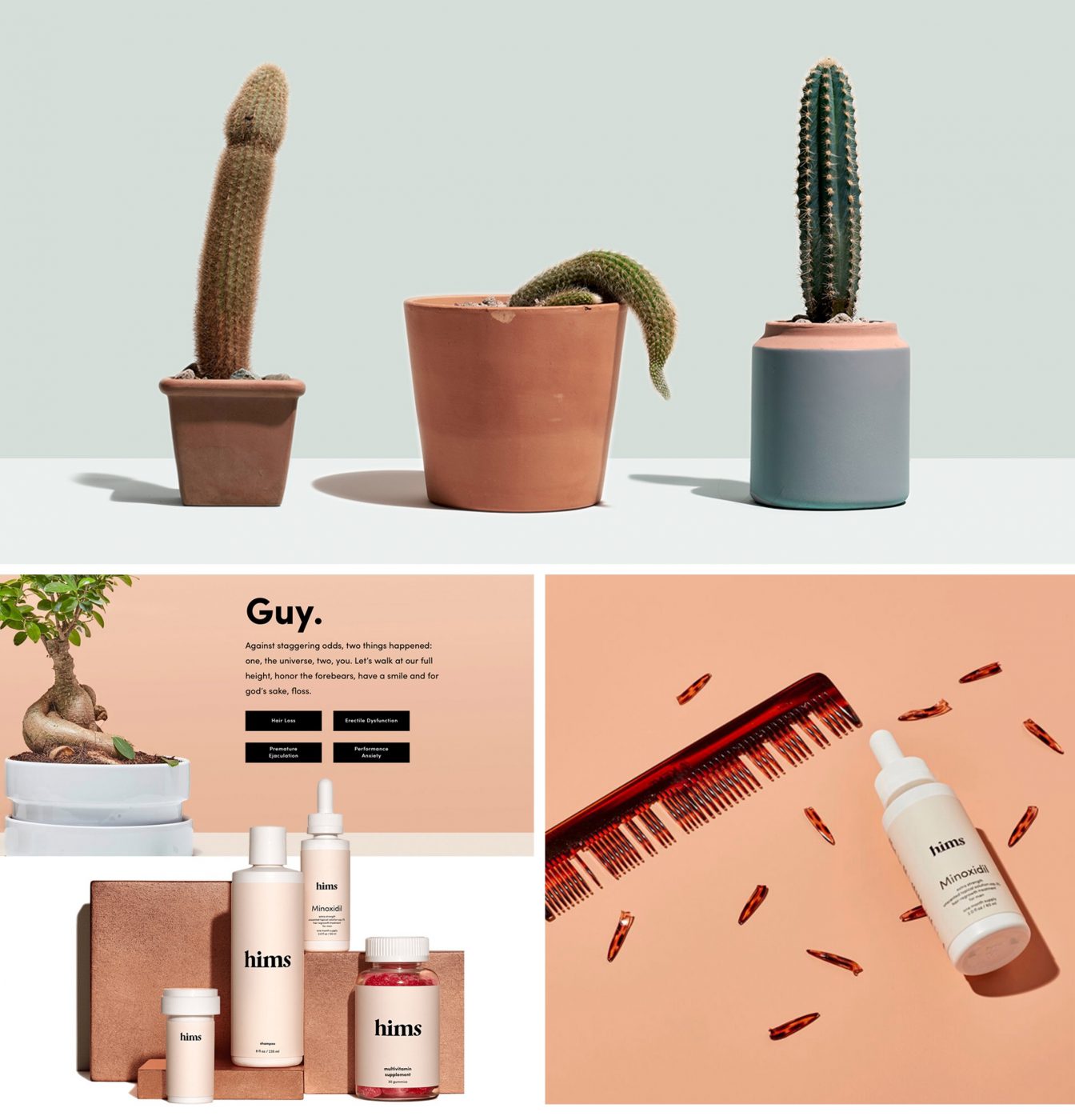
The items sold by Keeps, Hims and Queen V are not so different from those of their many other competitors found on the shelves of chemists and supermarkets, in terms of “products”. The difference is rather the way in which they present themselves and communicate. For example, the brand images that use unusual colours, fonts and visual language for pharmacological remedies are the ones that will catch your eye straight away.
But it doesn’t stop there. The (successful) undertakings carried out by these brands goes well beyond simply embellishing an already existing product. The aesthetic depiction of the brand and how it is advertised are just the tip of the iceberg. The real difference lies in the definition of the illness (or the physical or psychological “issue” being faced) presented in the image of these brands.
The first change in perspective took the form of responding to a specific issue not with a one-off intervention but with a course of treatment. This is often used for incurable conditions, necessitating the repeated use of drugs and an often-radical change in one’s behaviour.
The solution is not a miraculous cure that you take as soon as the problem appears, but a course of treatment. This may consist of pills, ointments or syrups, but these are to be taken according to a dosage that is adapted to the individual and the current status of the illness and should be accompanied by behaviour and good habits that, altogether, make for a new lifestyle.
To allow the user to take immediate and regular action, without stressing and turning their day-to-day life upside down, these new brands offer a subscription-based business model. Care of personalises its vitamins and supplements packages based on the needs and preferences of the user, which are conveyed through an online questionnaire. The products are then regularly delivered to their home according to their requirements, which can be edited online at any time.
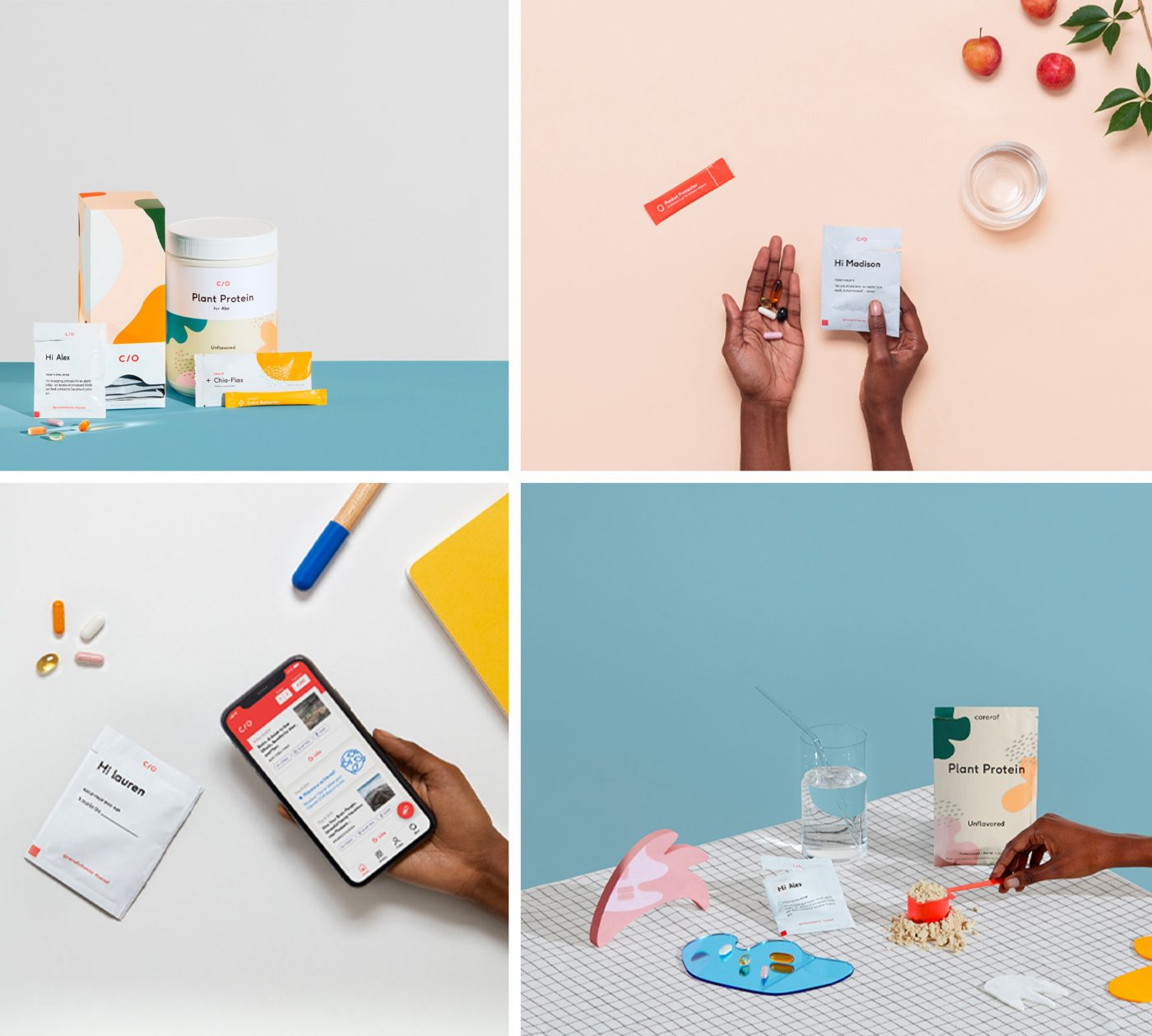
Curology goes a step further in tailoring their skincare creams to the needs of individuals. This is achieved by putting each user in contact with a professional who can identify and combine the right ingredients, creating a lotion that is right for them. In order to avoid miscommunications, the lotion takes the name of the user. The professional then tracks their progress.

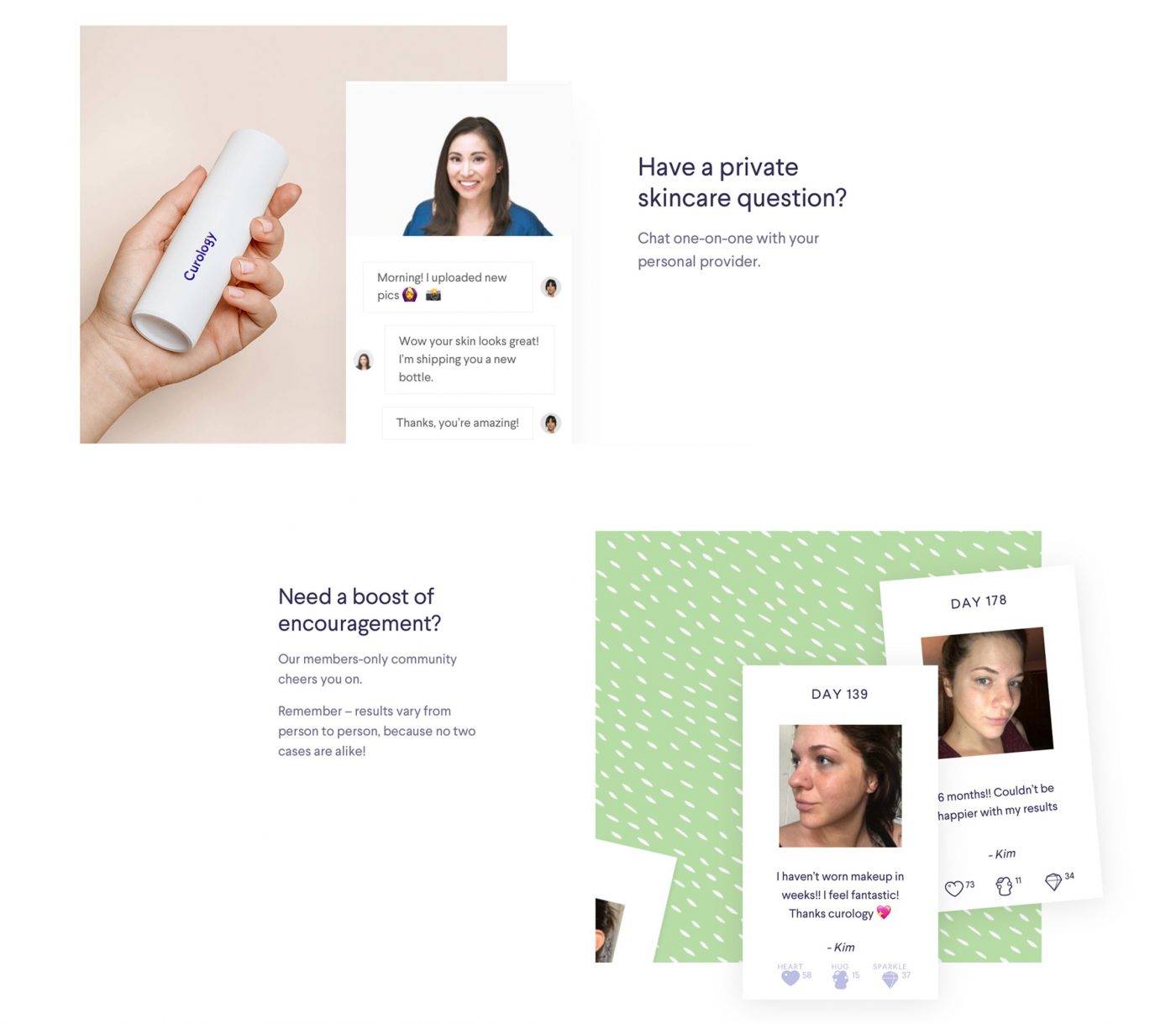

Another way in which users are looked after and guided in their daily life is through specially created content that educates consumers, advising them about good behaviour patterns, debunking myths and keeping them up to date with news and initiatives. By signing up to receive Callaly’s tampons, you can also read their journal, which includes special guides, interviews with experts, stories from real women and information about social initiatives.
The second crucial change in perspective came in considering your health no longer as a source of embarrassment but as something that you can talk about. The brands tune into their users and no longer offer them a mask to cover up their problem and pretend it doesn’t exist. Quite the opposite, they want to help people who are suffering talk about their condition, so they see that they are not alone, drawing comfort and strength from the stories of others.
The irony used by Hims to normalise and tackle issues is common across many brands. Meanwhile Blume adopts a more empathetic and personal approach. The two sisters who founded this company have experienced first-hand the distress of not being able to find effective yet convenient products for intimate hygiene and body care during one’s teenage years. That’s why they used their own experience as a springboard and, also taking inspiration from the stories of other girls, created what they call a “gang” of products for which their users’ stories act as the best testimonials.

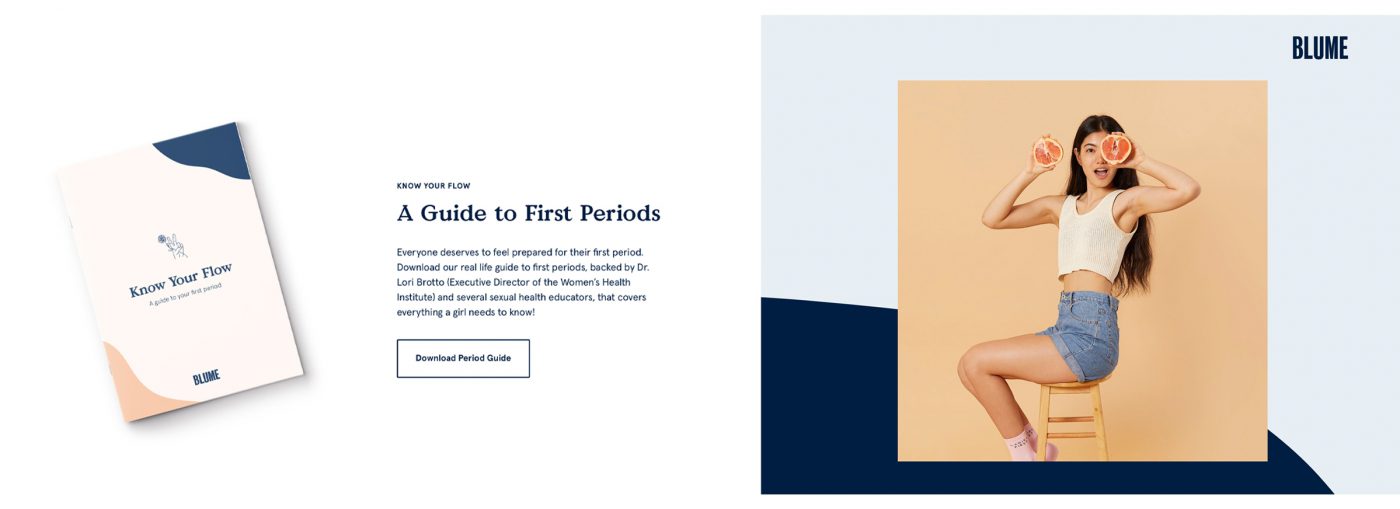

Having broken the ice and opened up a conversation, real communities have been formed around the brands. Genneve presents itself more as an online listening clinic than an e-commerce portal for menopause products. The type of conversations that it opens up to its users take every possible form, from one-to-one discussions with an expert, to the forum where you can talk with other members of the community.
The last change in perspective is related to leading users to transform their fear into freedom. The real aim of the above-mentioned brands has been to allow their consumers to be free to live their life, without worries or fears about their health. When brands tackle conditions that come up at a certain time in their users’ lives, shaking up the norms they were used to, they need to know a way to tell them that it is possible to carry on living. Not only is it possible, it is also wonderful and fun.
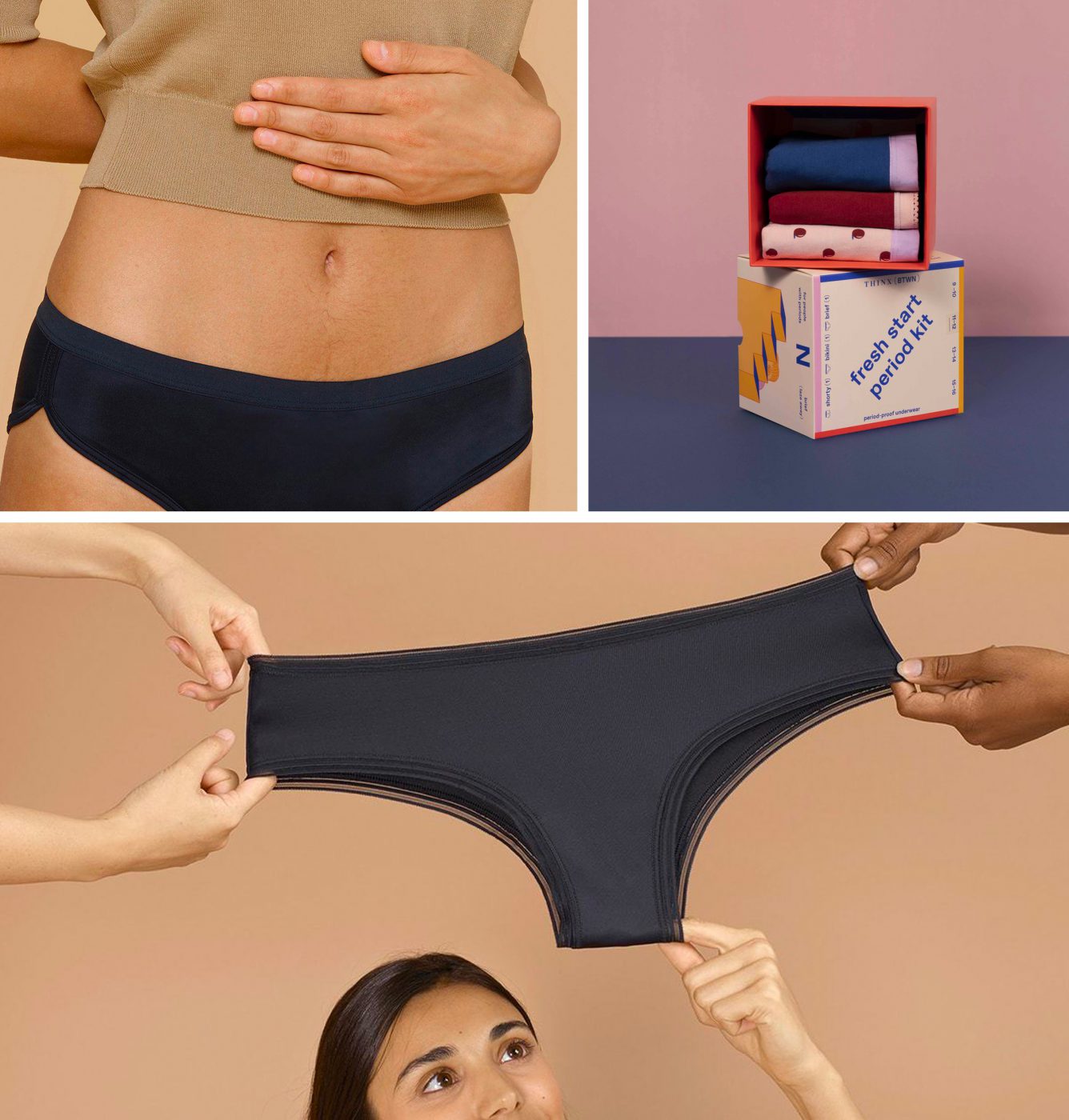
Queen V is launching an ode to freedom, with gaudy colours and photos of real, happy women. They want to give all women the freedom to “say the word vagina without getting embarrassed” and to stop worrying about their health and hygiene, because it is possible to deal with it anywhere, any time. Hers is another brand that creates content and offers online prescriptions that put women back in control of their health. Convinced that no one can do it better than themselves, they help women to get to know their own body and meet their needs. Thinx dispels any uncertainties surrounding periods and looking after your underwear during your menstrual cycle, using real life simulations. User influencers demonstrate this further, as they give details of their days on social media.
The brand image of these new trademarks gives us with a wider view, which goes beyond simple packaging and slogans: it is the illness that needs new approaches and a new language, not the pharmacological products. Through a change in perspective, the brand acts as a beacon, able to direct the way it comes across in all circumstances, from its visuals to the business model.
Marta Fontana, Strategic Designer at CBA
È risaputo che la plastica, pur essendo un’invenzione miracolosa nata dalla creatività dell’uomo, non sta avendo un impatto positivo sul nostro pianeta.
Secondo il World Wide Fund (https://www.wwf.it/petizione_plastica.cfm) sono 8 milioni le tonnellate di plastica che finiscono ogni anno negli oceani, e se nessuno prenderà provvedimenti presto ci saranno più rifiuti che pesci. Questo, oltre a influenzare il benessere dei nostri mari e delle loro creature, condiziona negativamente anche la superficie terrestre.
Il numero di aziende che si sono rese conto di questo problema sta aumentando. Grandi colossi della moda, della finanza e del largo consumo hanno deciso di aderire al New Plastics Economy Global Commitment ( https://www.newplasticseconomy.org/projects/global-commitment) lanciato da Ellen MacArthur Foundation. Il progetto ha lo scopo di ridurre l’inquinamento attraverso diverse iniziative organizzate in tutto il mondo. Anche WPP, il più grande gruppo al mondo dedicato ai servizi di comunicazione di cui siamo parte, ha aderito al progetto.
Questo impegno si traduce in piccoli gesti quotidiani che ogni organizzazione può mettere in atto. Secondo Mark Read, CEO di WPP: “Il nostro settore ha il forte potere collettivo di apportare cambiamenti in meglio, ma i nostri sforzi devono iniziare da casa. Togliere la plastica da Wire & Plastic Products eliminando gradualmente la plastica monouso nei nostri uffici è solo il primo step.”
CBA si è posta l’obiettivo di compiere scelte orientate alla responsabilità, per dare il proprio contributo a un futuro più sostenibile e diventare promotore di comportamenti virtuosi, ispirando clienti e partner. Con il progetto “Plastic Free” puntiamo a eliminare progressivamente la plastica usa e getta dagli uffici, sostituendola con prodotti riciclabili o a impatto zero.
Abbiamo smesso di utilizzare la plastica monouso durante gli eventi, gli incontri e le riunioni con i clienti: posate, bicchieri e bottiglie di plastica sono scomparsi, sostituiti da vetro, metallo e ceramica.
Si è scelto di installare un erogatore collegato direttamente alla rete idrica in grado di sostituire le bottiglie attualmente utilizzate, garantendo allo stesso tempo la distribuzione di acqua di qualità.
L’introduzione del dispenser ha incentivato l’utilizzo da parte di tutti i collaboratori di borracce e brocche riutilizzabili, dimostrazione di come scelte di questo tipo conducano a una forte sensibilizzazione collettiva.
Questo è solo il primo passo di CBA per incentivare la sostenibilità nell’ufficio e per dare il buon esempio agli ospiti che tutti i giorni vengono a trovarci.
Link citazione Mark Read:
https://www.wpp.com/news/2019/06/wpp-takes-the-plastic-out-of-wire-and-plastic-products
Subscribe and receive CBA’s latest news directly in your inbox!
© CBA DESIGN 2021 – CB’A Srl 05940620965
Privacy Overview